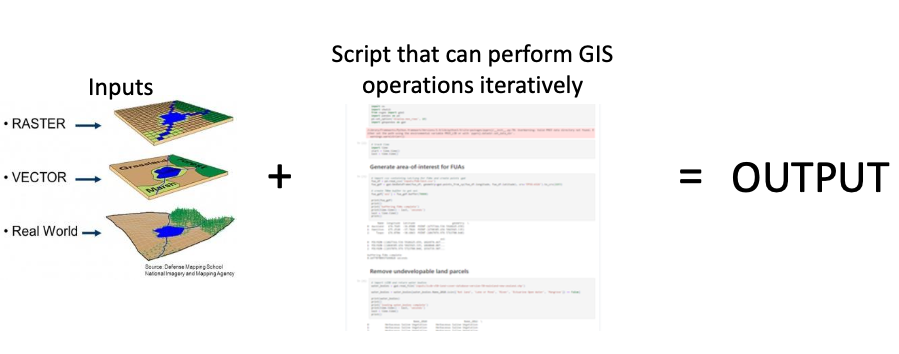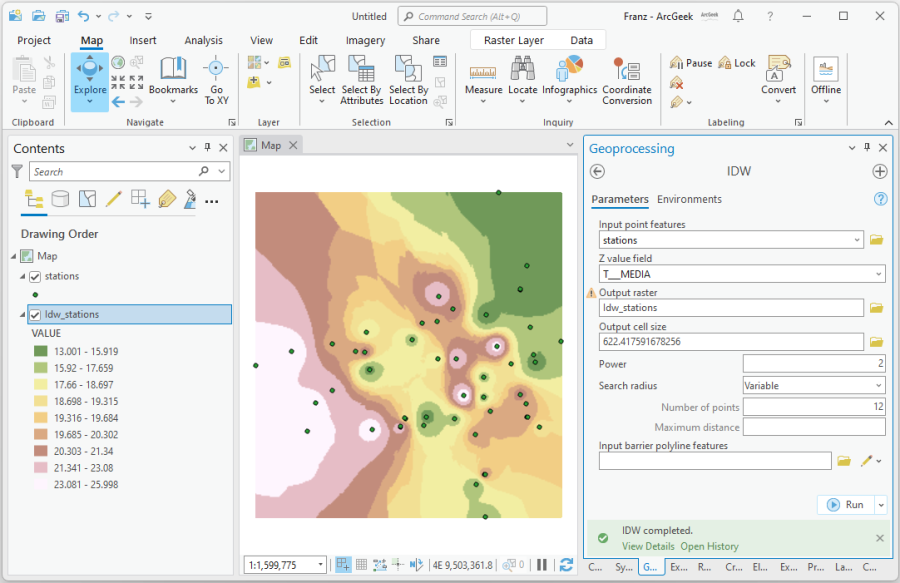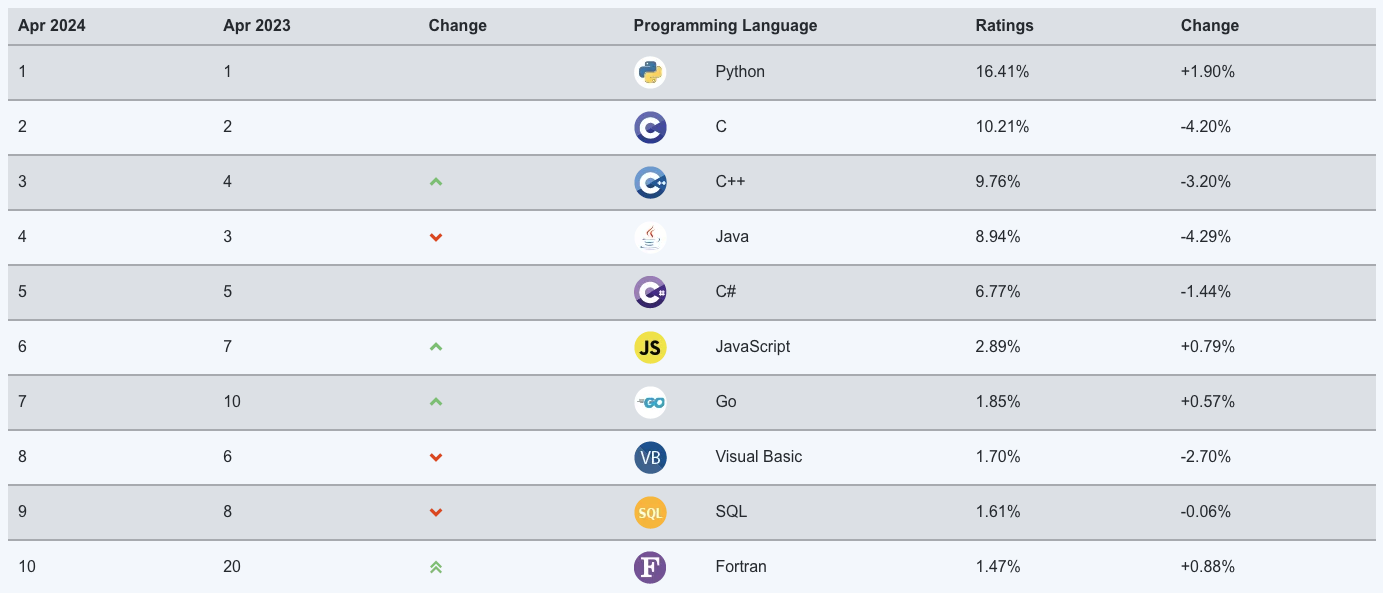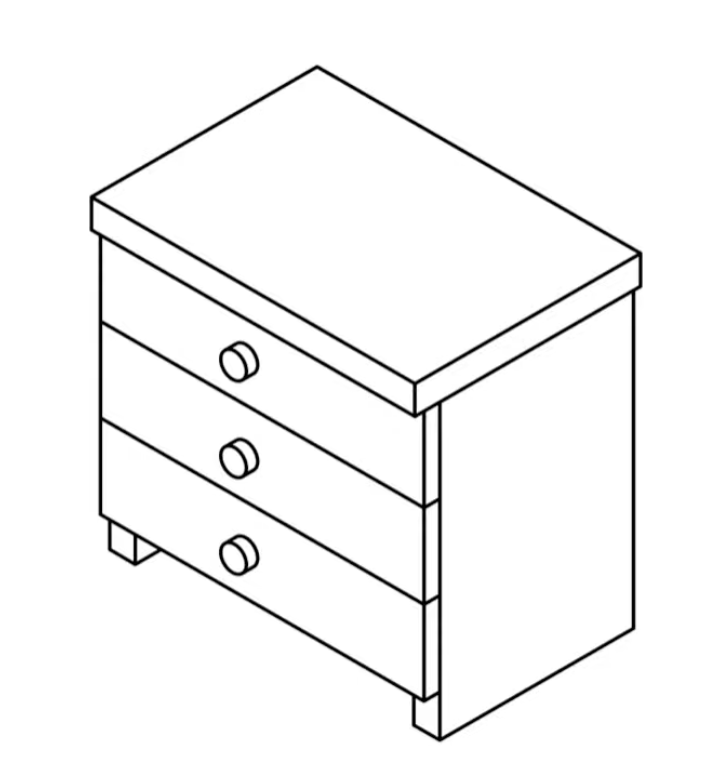
Gentle Introduction to Programming Part 1
: for GIS Dummies
May 7, 2025
What will we cover?
- Why programme in a GIS course?
- Programming Basics
- Interactive lecture
Why do we learn to code?
- We are not computer scientists (I am not at least)
- GISci and Geography disciplines are becoming increasingly quantitative
- Large datasets
- We want to do our job quickly and do less of the same work.
- Programming can also be fun
- Programming can help make us better scientists - Open Science

Example: Python
What is a computer?

What is a computer - Python

What are computers good at?
Tasks computers are good at include 1:
- Well-defined tasks (i.e. Clear aim, Low Risk of Failure)
- Data storage and manipulation
- Repetitive calculations
- Processing data or instructions (Important!)
What are computers bad at?
- Tasks requiring impossible computing power (intractable tasks)
- Can’t remember what you’ve written (unless you wrote it down somewhere)
We need to be less poetic
and become more direct to the point
Why Python?
1. Python is widely used
- Python being 1st in a row in programming (TIOBE Rank)

2. Python is open
- Open as in
- free of charge
- as in access (download and run)
- over time
- not closed
- reuse and change
- any place (platform) and for everyone
3. Python is approachable
- Modern interpreted languages (Python) – Code is interpreted line-by-line via a programme
- Translating high-level human readable code to machine readable code
- Scripting
- Only need snippets of code
- Can perform jobs quickly
- Ideal for GIS jobs
4. Python is connected
- Geographic Information Systems (GIS) software such as QGIS or ArcGIS now include a Python interpreter built in to the software
- Can customise solutions for your specific data analysis needs

5. Python is linked to our GISCI courses & future jobs
- ENVSCI 203 Modelling Environmental Systems
- GISCI 341 Advanced Remote Sensing
- GISCI 343 GIScience Programming and Development
- Honours and Postgraduate courses
Industry & Academia & Public Sector…
The War of Coding

FYI: We have plenty of Geocomputation courses in postgraduate courses!
R & Python both have specialties.
FYI: I am an R enthusiast
Interactive Lecture using Python
What we will cover:
- Basics
- Variables
- Loops and basic conditionals
- Functions
- Geopandas
How will we cover it?
- Install Python on your machine
- Jupyter lab / Notebook
Google Colab
- “Another” Free service provided by Google
- Live code, text and graphics in one place
- Compatible with multiple languages

Roll your sleeves and let’s get started!
Make sure you are well set up with Google Colab using the URL below:
I will code here: https://tinyurl.com/gisci242
Basic Programming Concepts
We will cover:
- Simple Python maths
- Functions
forloops- Conditional Statements
- Import files
Simple Python maths
Simple Python maths - answers
Strings
Maths with modules
Facing Errors can be daunting
sin(3)
---------------------------------------------------------------------------
NameError Traceback (most recent call last)
<ipython-input-1-acdde95a6016> in <cell line: 1>()
----> 1 sin(3)
NameError: name 'sin' is not defined---------------------------------------------------------------------------
NameError Traceback (most recent call last)
<ipython-input-2-317e033d29d5> in <cell line: 1>()
----> 1 sqrt(4)
NameError: name 'sqrt' is not defined
Python can’t calculate square roots or do basic stats?
Of course it can, but we need one more step.
Solution
Well done! You have just managed to use a math module too!
Combining Functions
Functions can also be combined. The print() function returns values within the parentheses as text on the screen. Let’s print the value of the square root of four.
Variables
A variable can be used to store values calculated in expressions and used for other calculations
Data types
- A data type determines the characteristics of data in a programme
- Basic data types in Python.
| Data type name | Data type | Example |
|---|---|---|
int |
Whole integer values | 4 |
float |
Decimal values | 3.1415 |
str |
Character strings | ‘Freezing’ |
bool |
True/false values | True |
Data types
Your Turn!
- Print the
type()of:
- 33
- 8.394
- Windy
- FalseLists
When we have more clothes/items we would like to align similar types of clothes into a drawer

List Example 1
List Example 2
Let’s first create a list of selected station_name values and print it to the screen.
Index values
To access an individual value in the list we need to use an index value.
Python returns ‘Ōrākei’ instead of ‘Britomart’. Can anybody guess why?
Index values
Modifying list values
Modifying list values
Modifying list values
Your Turn!
- Define
station_namesin your environment - Add Otahuhu, Middlemore, Papatoetoe, Puhinui, Manukau as a list (you can Google “Auckland Eastern Line” and find the Wikipedia)
- Assign that in your environment as
more_eastern - This time, try
extendto combine the two lists
Documentation
- At this point, you might think, Hang on, do I have to memorise everything?
- The answer is NO
- If you are stuck, visit https://www.python.org/doc
- Google your problem (Stackoverflow)
- ChatGPT and Gemini (🧐)
for loop
- Loops allow parts of code to be repeated some number of times
- Iterates over all of the items in a Python list and performing a calculation on each item.
vs
for loop: concept
Let’s break down the code above to see some essential aspect of for loops:
- The
variablecan be any name you like. - The statement of the
forloop must end with a colon (:) - The code that should be executed as part of the loop must be indented beneath the
forloop statement. - The typical indentation is 4 spaces.
- There is no additional special word needed to end the loop, you simply change the indentation back to normal.
Your daily for loop
for day in my_life:
wake_up()
take_shower()
eat_breakfast()
brush_teeth()
ride_beam()
come_to_lecture()
...
for loop: an example
Different example
Examples using range
Examples using range
Your Turn!
- The indices of the cities and countries are in the same order
- For example, Helsinki and Finland are in index 0
- Create a
forloop that describes something like Helsinki is the capital of Finland
Examples using two lists - Answers
Helsinki is the capital of Finland
Stockholm is the capital of Sweden
Oslo is the capital of Norway
Reykjavik is the capital of Iceland
Copenhagen is the capital of DenmarkConditional statements
- We will learn how to make choices in our code using conditional statements (
if,else) and Boolean values (True,False). - Conditional statements can change the code behaviour based on certain conditions.
- The idea is simple: IF a condition is met, THEN a set of actions is performed.
if else Example 1
if else Example 2
if statement without else
- The code indented under the if-statement is not executed if the condition is not True. Instead, code under the else-statement gets executed.
- How about if without else?
Conditional operator
Comparison operators
| Operator | Description |
|---|---|
| < | Less than |
| <= | Less than or equal to |
| == | Equal to |
| >= | Greater than or equal to |
| > | Greater than |
| != | Not equal to |
Boolean values
- Comparison operations yield Boolean values (
TrueorFalse). - In Python, the words True and False are reserved for these Boolean values, and can’t be used for anything else.
Combinations
Combining conditions
- We can also use and and or to combine multiple conditions on boolean values
| Keyword | Example | Description |
|---|---|---|
| and | a and b | True if both a and b are True |
| or | a or b | True if either a or b is True |
Combination Example
weather = "rain"
wind_speed = 14
comfort_limit = 10
# If it is windy or raining, print "stay at home",
# otherwise (else) print "go out and enjoy the weather!"
if (weather == "rain") or (wind_speed >= comfort_limit):
print("Just stay at home")
else:
print("Go out and enjoy the weather! :)")Just stay at homeCombining for-loops and conditional statements
- We can also combine for-loops and conditional statements.
- Let’s iterate over a list of temperatures, and check if the temperature is hot or not
Summary - What have we learned?
- Programming is not too difficult than you think. They are easy to understand and share (and fun!)
- Programmes keep a log of the changes you make to your programmes - open science
- Python is one of the popular programming languages - we are going to nail this!
- Basics of Python
- Basic programming
- Functions
- for loops
- Conditional statements
- Combos of the above
Next week
- How to import spreadsheet data
- How to clean and use data
- Learn it through
Pandasmodule
References
- Tekanen et al. (2022), Introduction to Python for Geographic Data Analysis, https://pythongis.org/
- Rey et al. (2020), Geographic Data Science with Python, https://geographicdata.science/book
- Dorman et al (2023), Geocomputation with Python, https://py.geocompx.org/
Thanks!
Q & A
